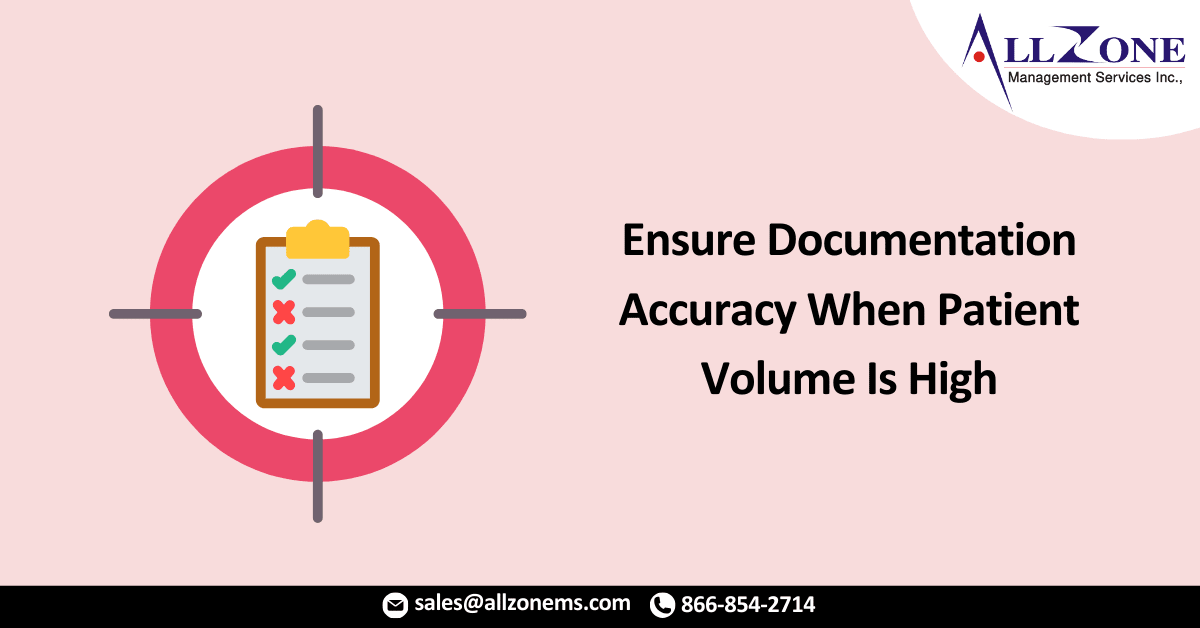Completing all necessary documentation to describe the individual’s current condition, treatment needs, interventions, and medications must be done with precision.
The end of a calendar year and the beginning of a new one can be a busy time for healthcare practices, and this year is shaping up to be no different. In much of the country, colder weather has arrived, which may mean more patients coming into your practice with colds and viruses.
At the same time, physicians are seeing some patients for their annual physical, or additional follow-up visit, before the year ends. This is especially important for individuals who have chronic conditions that require regular medication, screenings and specialist appointments. And in January, a practice may experience an additional influx of patients due to changes in health plans, including those on a new Medicare plan, resulting in practices needing to establish care with those patients as soon as possible.
As practices navigate this busy period, putting processes in place now for accurate documentation will help in the long run.
Physicians can have many back-to-back appointments in one day decreasing the opportunities for accurate documentation. This can lead to the likelihood of details being overlooked, especially if the patient you are seeing for the first time has several underlying conditions. Completing all necessary documentation to describe the individual’s current condition, treatment needs, interventions, and medications must be done with precision.
Accurate clinical documentation aligns providers and health plans with the patient’s care needs, giving all stakeholders a complete picture of the patient’s health risks and treatment plans. This enables more efficient, effective, and targeted care that follows best practices. Such documentation also helps you understand your patient population’s acuity. Accurate and complete re-documentation for all chronic conditions is particularly important in your Medicare population. This also drives best-in-class clinical activities, testing and follow-up associated with those chronic conditions.
How can a practice ensure documentation accuracy when patient volume is high?
An important first step involves taking the pressure off physicians to conduct every aspect of documentation and pre-work prior to the patient’s arrival, and during their office-visit. Pre-work prior to the patient’s arrival in the office, is the cornerstone for good patient care. Some doctors use a morning huddle to accomplish this, knowing that e.g. when Mrs. Smith arrives – she will need to receive her vaccines, and she is due for a referral for colonoscopy. Good use of experienced physician extenders, such as nurse practitioners, to conduct intake and wellness exams can also drive efficiencies. These providers can spend more time with patients learning about their current health status and determining their needs. During the appointment, they can review the patient’s known conditions and ask about any changes that have happened within the past year that could indicate any changes in their status. The nurse practitioner can complete the necessary documentation, order the appropriate screenings and tests, and refill prescriptions as needed. From the patient’s perspective, the appointment feels no different than a regular annual check-up. However, by using this approach, medical practices can ensure they have sufficient time to accurately record the appointment and close care gaps. This also allows physicians to focus on complex or acute issues that require their level of expertise during the visit.
Another way to enhance documentation is through the use of data intelligence tools. These tools can seamlessly integrate data from claims, CMS data, supplemental, and medical record information to the patient’s electronic health records (EHR) to understand the care the patient is receiving from their entire care team, even from outside the primary care physician’s practice. Such tools can list members of the patient’s care team, help physicians determine gaps in the patient’s care, and show historical and suspected chronic conditions. Expanded documentation can also note events such as emergency department visits and hospitalizations, share reminders about upcoming appointments, and list medications. The technology will even prompt providers to consider potential red flags that may trigger a further appointment or a connection with the physician. When this information is aggregated into one chart, clinicians can better understand the patient’s current status and align services with the patient’s needs.
In addition to ensuring accurate documentation, the above strategies can improve the patient experience as well. Physician extenders allow the patient to have quality time with a provider to answer their questions. Data intelligence tools enable a more efficient appointment, which builds patient confidence when the practice is prepared and able to create a personalized care plan that meets the patient’s needs. From a provider perspective, the two-pronged approach also reduces the administrative work for physicians.
By implementing some proactive strategies that can support accurate documentation amid higher patient volume, practices can ensure they are capturing the right information at the right time to improve patient outcomes and support their providers in the best way possible.
For More Information: ensuring comprehensive documentation during times of higher patient volume

